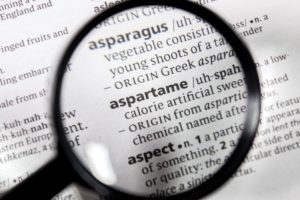Breastfed Babies Are Smarter
 The American Academy of Pediatrics as well as the American Medical Association and the World Health Organization recommend breastfeeding for babies. Health experts claim breastfeeding helps defend against infections, prevent allergies, and protect against a number of chronic conditions.
The American Academy of Pediatrics as well as the American Medical Association and the World Health Organization recommend breastfeeding for babies. Health experts claim breastfeeding helps defend against infections, prevent allergies, and protect against a number of chronic conditions.
A study in the journal “Pediatrics” found that babies who were mainly breast-fed for the first six months of life or longer, scored higher academically when they got older, than children who were not breastfed or breastfed over a shorter length of time. Colostrum is the thick yellow first breast milk that you make during pregnancy and just after birth. This milk is very rich in nutrients and antibodies that protect your baby.
“The biggest surprise was boys did better than girls if breastfed,” noted lead author Dr Wendy Oddy, a researcher with Telethon Institute for Child Health Research, Centre for Child Health Research, University of Western Australia. “Boys develop slower than girls and this may be due to neuro-protective effect of the female hormones (estrodiols) in girls. Breastfeeding may advance maturation in boys so they develop faster than if not breastfed.”
Exercise Before Breakfast Yield Best Results

For the study, researchers in Belgium recruited 28 healthy, active young men and began stuffing them with a truly lousy diet, composed of 50 percent fat and 30 percent more calories, overall, than the men had been consuming. Some of the men agreed not to exercise during the experiment. The rest were assigned to one of two exercise groups. The groups’ regimens were identical and exhausting. The men worked out four times a week in the mornings, running and cycling at a strenuous intensity. Two of the sessions lasted 90 minutes, the others, an hour. All of the workouts were supervised, so the energy expenditure of the two groups was identical.
Their early-morning routines, however, were not. One of the groups ate a hefty, carbohydrate-rich breakfast before exercising and continued to ingest carbohydrates, in the form of something like a sports drink, throughout their workouts. The second group worked out without eating first and drank only water during the training. They made up for their abstinence with breakfast later that morning, comparable in calories to the other group’s trencherman portions.
The experiment lasted for six weeks. At the end, the non-exercising group was, to no one’s surprise, super-sized, having packed on an average of more than six pounds. They had also developed insulin resistance — their muscles were no longer responding well to insulin and weren’t pulling sugar (or, more technically, glucose) out of the bloodstream efficiently — and they had begun storing extra fat within and between their muscle cells. Both insulin resistance and fat-marbled muscles are metabolically unhealthy conditions that can be precursors of diabetes.
The men who ate breakfast before exercising gained weight, too, although only about half as much as the control group. Like those sedentary big eaters, however, they had become more insulin-resistant and were storing a greater amount of fat in their muscles.
Only the group that exercised before breakfast gained almost no weight and showed no signs of insulin resistance. They also burned the fat they were taking in more efficiently. “Our current data,” the study’s authors wrote, “indicate that exercise training in the fasted state is more effective than exercise in the carbohydrate-fed state to stimulate glucose tolerance despite a hypercaloric high-fat diet.”
Get Off The Couch And Start Exercising!
 According to epidemiologist and researcher Steven Blair, the gravest public health problem of the 21st Century is Americans’ physical inactivity and it poses the greatest risk of ill health to Americans.
According to epidemiologist and researcher Steven Blair, the gravest public health problem of the 21st Century is Americans’ physical inactivity and it poses the greatest risk of ill health to Americans.
A professor of exercise science and epidemiology at the University of South Carolina’s Arnold School of Public Health, Dr. Blair is recognized as one of the world’s leading experts on exercise and its health benefits.
Blair recently reported his findings at the American Psychological Association’s (APA) 117th Annual Convention held in Toronto.
Blair pointed to research showing that around 25 to 35 percent of American adults are inactive. They work sedentary jobs, engage in no regular physical activity program, are generally inactive around the house and most don’t even do their own yard work. “Given that these individuals are doubling their risk of developing numerous health conditions compared with those who are even moderately active and fit, we’re looking at a major public health problem,” Blair said in a statement to the media.
Research shows that men who are only moderately fit live six years longer than men who are predominately sedentary.
An examination of 14,811 female patients in the same study as above showed that those who were very fit were 55 percent less likely to die from breast cancer than women who were not in good shape.
This huge reduction in breast cancer deaths was calculated after the researchers controlled for BMI, smoking, family history of breast cancer and other possible risk factors. Blair also explained in his APA presentation that recent emerging evidence shows exercise is good for brain health and can delay the mind’s decline.
Is It Ever Too Late To Build Muscle?
The good news is that muscle mass can increase at any age in response to exercise. In an important study of weight lifting and older adults conducted with 100 male and female residents of a nursing home in Boston (age range: 72 to 98 years; average age 87), subjects lifted weights with their legs three times a week for 10 weeks.
At the end of the study, there was an increase in thigh mass of 2.7 percent, walking speed increased 12 percent, and leg strength increased a whopping 113 percent! In a similar study of adults 65-79 years old, subjects who lifted weights three times a week for three months increased their walking endurance by 38 percent (from 25 minutes to 34 minutes) without appreciable increases in mass.
Magnesium is the Anti-Stress Mineral
 Here are just some of the symptoms of a magnesium deficiency: asthma, lowered energy levels, sleeplessness, headaches, muscle aches, tension and soreness, fatigue, anxiety, seizures, nervousness, PMS, weak bones, teeth grinding, insomnia, difficulty breathing, and heart problems.
Here are just some of the symptoms of a magnesium deficiency: asthma, lowered energy levels, sleeplessness, headaches, muscle aches, tension and soreness, fatigue, anxiety, seizures, nervousness, PMS, weak bones, teeth grinding, insomnia, difficulty breathing, and heart problems.
Bodily magnesium is depleted by a number of things including alcohol, smoking, sweating too much, drug use, hypothyroidism (low production of metabolism), diabetes, sugar, carbohydrates, sodium, or calcium-filled diets, and finally, the main culprit – stress. To get magnesium in your diet, be sure to eat lots of dark green foods, whole grains (check the label), garlic, lemons, avocados, chamomile, and cantaloupe, to name a few. A healthy diet is a great start, but to get the optimal daily allowance of magnesium, I recommend you take a daily multivitamin with 400-500mg of magnesium.
Is the Sugar Substitute Splenda Safe?
A study done at Duke University and published this past week in the Journal of Toxicology and Environmental Health has some interesting news about the sugar substitute known as Splenda (sucralose). Splenda is an artificial sweetener that creates the sugar sucralose from raffinose – a starch derived from sugar beets. The chemical sucralose, which contains chlorine, is marketed as a natural sugar. However, Splenda isn’t natural at all.
 According to the study, the use of Splenda
According to the study, the use of Splenda
- Reduces the amount of good bacteria in the intestines by 50 percent. The bacteria in your bowels, some 100 trillion bacteria or about three pounds worth, outnumber the cells in your body by a factor of 10 to one. These bacteria, or gut flora, which line your intestinal tract are your first line of defense against potential pathogens (viruses, bacteria, and yeast). They play a crucial role in establishing an overall healthy immune system. When bad bacteria and/or yeast become overgrown in your intestinal tract, you have a condition called dysbiosis. Dysbiosis has been linked with disorders like yeast infections, irritable bowel syndrome, and autoimmune disorders, including rheumatoid arthritis.
- Increases the pH level in the intestines. The stomach needs an acidic environment in order to digest food and destroy potentially harmful pathogens including unwanted bacteria and yeast. Low stomach acid triggers a chain reaction of digestive disorders, including malabsorption. Foods may be incompletely digested and subsequently absorbed into the bloodstream, where they can lead to food allergies, triggering pain and inflammation throughout the body.
- Contributes to increases in body weight.
What about NutraSweet/Aspartame?

Aspartame has been associated with a multitude of health risks and has largely lost favor around the world. Consider that the FDA had its concerns and denied approval of aspartame for 16 years before it finally gave in to political/economic pressure. This controversial artificial sweetener was approved through an interesting chain of events. When Ronald Reagan brought Don Rumsfeld, former CEO of the aspartame manufacturer Monsanto, to Washington, a new FDA commissioner was hastily appointed.
The new commissioner approved the artificial sweetener and then went on to become a consultant for NutraSweet’s public relations firm, receiving $1000 a day for the next 10 years!
Aspartame, commonly known as NutraSweet or Equal, is an artificial sweetener. The body breaks it down into methanol and formaldehyde to metabolize it. Formaldehyde is grouped into the same class of drugs as cyanide and arsenic. When the temperature of aspartame exceeds 86 degrees F, the wood alcohol in aspartame is turned into formaldehyde and then into formic acid. Formic acid is the poison contained in the sting of a fire ant. It has been shown that methanol toxicity causes depression, brain fog, mood changes, insomnia, seizures, and similar symptoms associated with multiple sclerosis.
There are over 92 symptoms documented from using aspartame. I recommend avoiding both Splenda and NutraSweet.
Use all natural stevia instead.
Have a Sore Throat? Gargle With Salt Water

In a randomized study published in The American Journal of Preventive Medicine, researchers recruited almost 400 healthy volunteers and followed them for 60 days during cold and flu season. Some of the subjects were told to gargle three times a day. At the end of the study period, the group that regularly gargled had a nearly 40 percent decrease in upper respiratory tract infections compared with the control group, and when they did get sick, “gargling tended to attenuate bronchial symptoms,” the researchers wrote.